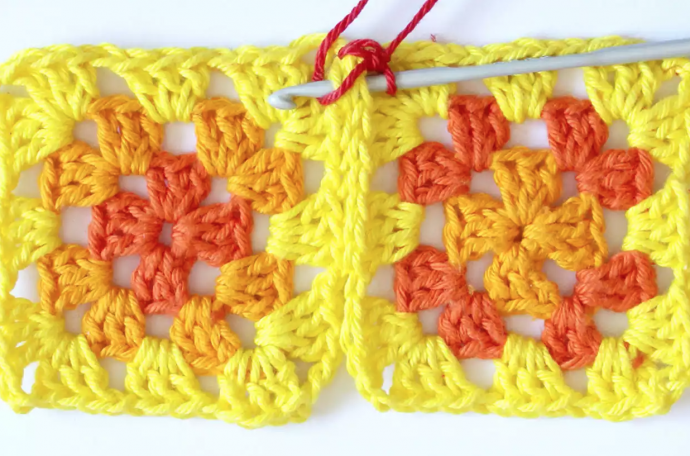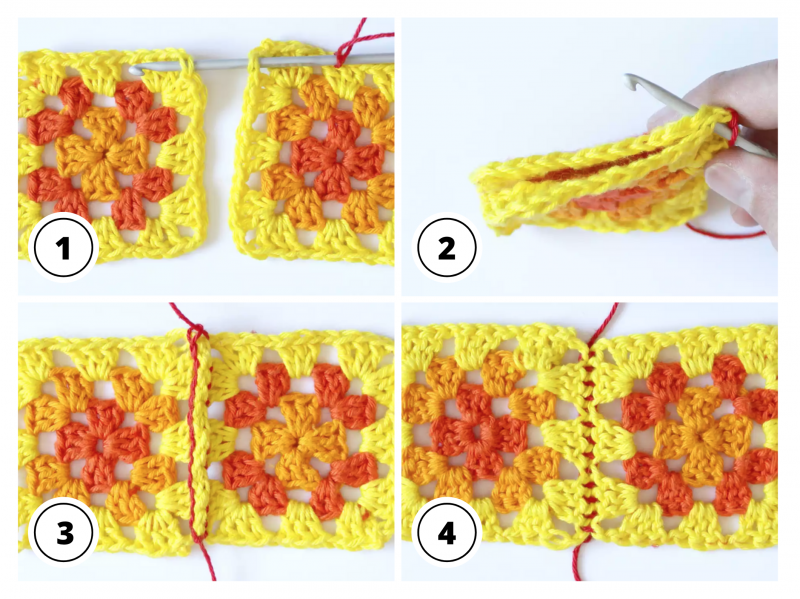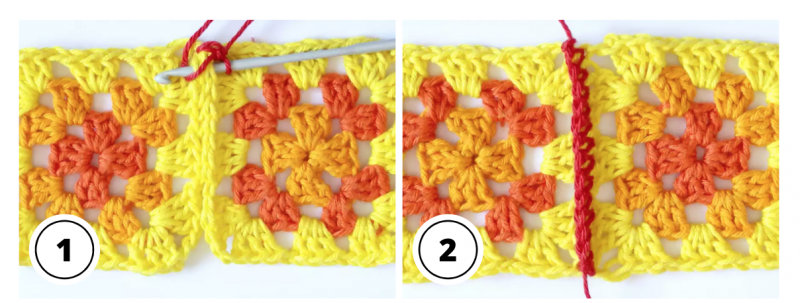Crochet Basics: 2 Methods of Joining Your Work Together

Once you’ve mastered crochet shapes, the final part is to join your crochet shapes together! Fortunately there are different methods, using either a yarn needle or a crochet hook, and all of which have their own individual qualities. To join pieces of crochet, it’s often simplest to stitch them together, but you can also use a crochet hook as well. You’ll get the least visible seam using slip stitch to join pieces. Double crochet forms a ridge at the seam which can make a feature on the right side. When you have lots of pieces, it’s worth joining pairs of motifs in a continuous seam to avoid repeated fastening off.
Today I’d like to share with you a simple tutorial which includes 2 different methods for joining your crochet with a hook instead of sewing.
Slip Stitch Join
Slip stitch joins are a super-quick way to join two shapes together.
How to make it?
Start by making a slip knot to attach the yarn to your hook. Insert your hook through the first stitch on your right crochet piece (under both loops, going front to back) and through the corresponding stitch on your left crochet piece (under both loops, going back to front). Then just slip stitch as normal – yarn round hook, pull through work and loop on hook.
Now just continue along, slip stitching the next stitches of both sides together. You may find it easy to almost ‘sandwich’ the pieces together so you can place your hook through both pieces in one go. Once you've reached the end, you can fasten off as usual.
And that’s how you do a quick slip stitch join. Normally you would do your joins with the wrong side facing. Slip stitch joins tend to raise the fabric a bit where the join is, and slope to one side when the join is facing you, like in the image below.

Double Crochet Join
Double crochet joins are not only a nice way of joining shapes together but also add a nice decorative quality. They can create a nice waffle-like texture when used for joining granny squares (or, as I told you last time, you can make one giant granny square). When doing a dc join, you would always do your join on the right side of your work. Hold the crochet pieces so that the right sides are facing each other (inwards). If you are using the yarn that is still joined to your crochet piece then you will need to work 1ch before you start. If using a new piece of yarn then work 1ch into the first stitch of the front piece to join in the yarn.
The best way to start a dc join is with what is called a standing stitch – basically you just go straight in and start with a dc, no need to slip stitch or ch1! So make a slipknot and put the yarn on your hook, insert your hook through the first stitch on your right crochet piece (under both loops, going front to back) and through the corresponding stitch on your left crochet piece (under both loops, going back to front), yarn over hook, pull through the work, yarn over, pull through both loops on your hook.
Continue dc stitching along until you’ve competed your join. Dc joins will ever so slightly lean to one side, so it’s important to remember to always do your joins going in the same direction for a neat final project (i.e. top to bottom or bottom to top).
Again like the slip stitch join method the reverse of your join will look like little horizontal stitches.

One of the reasons I love dc joins is that they’re easy to do and can be used to join a whole project very quickly. For example, let’s say you’re making a granny square blanket. You can easily join a number of squares together into vertical strips. Then when it comes to the horizontal joins, you would just work across up to your first vertical join, then you can simply ch1 which will take you over the join, then continue your horizontal join on the next square along.
Anyway, these joins are just as a reference. You can do any of them or master both. However, the most important thing is to remember to be consistent in the direction of your joins for a neat result.
And what is your favorite method?
Happy crocheting!
